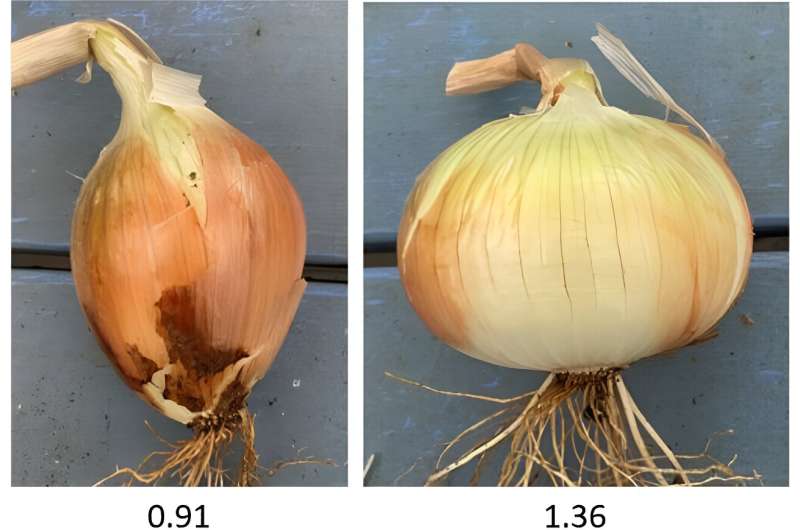This article has been reviewed according to Science X's editorial process and policies. Editors have highlighted the following attributes while ensuring the content's credibility:
fact-checked
peer-reviewed publication
trusted source
proofread
Genetic study uncovers onion bulb shape, size secrets

A new study by the Department of Plant and Agroecosystem Sciences, University of Wisconsin details the genetic mechanisms influencing the shape and volume of onion bulbs, along with the effects of daylength on the bulbing process. This research provides significant advancements in agricultural science, with potential implications for crop improvement and food security.
The research is published in the journal Journal of the American Society for Horticultural Science.
The study employed cutting-edge genetic analysis techniques to unravel the complex interplay between genetic factors and environmental conditions that determine onion bulb characteristics. Onions, a staple in global cuisine, vary widely in shape and size, attributes that are critical for both consumer preference and agricultural efficiency.
The formation of onion (A. cepa) bulbs is affected by the length of night and temperature; nevertheless, onion germplasm is commonly classified according to length of daylight, as opposed to length of darkness, required for bulb formation. Short Day (SD) and Long Day (LD) onions initiate bulb formation under lengthening periods of light at ∼12 and ≥14 h, respectively.
Intermediate-day cultivars initiate bulb formation between the day lengths of SD and LD onions. LD cultivars grown under short days may never bulb; SD onions grown under long days initiate bulb formation early and produce bulbs too small to be commercially acceptable. In addition to daylength, bulb formation is affected by temperature. Under the same lighting regimen, higher temperatures hasten bulb formation and plant maturity.
The study identified the genetic bases of morphological traits of onion bulbs, and highlighted the critical role of photoperiod (daylength) in the bulbing process. The research provides detailed insights into how varying day lengths trigger the transition from vegetative growth to bulbing. Understanding this mechanism is important for optimizing growing conditions and improving yields in different geographical regions.
The findings offer a valuable genetic framework for developing onion varieties that are more resilient to environmental stresses and capable of producing high yields in diverse climates. This has the potential to significantly impact global onion production, ensuring a stable supply and contributing to food security.
More information: Michael J. Havey, Genetic Analyses of the Shape and Volume of Onion Bulbs and Daylength Effects on Bulbing, Journal of the American Society for Horticultural Science (2024). DOI: 10.21273/JASHS05362-23
Journal information: Journal of the American Society for Horticultural Science
Provided by American Society for Horticultural Science




















